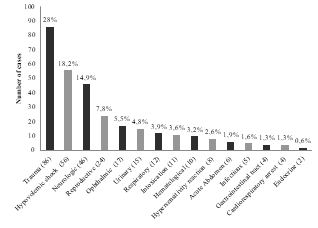Epidemiological aspects of 306 emergency cases of small animals seen at a veterinary school hospital
DOI:
https://doi.org/10.21708/avb.2020.14.4.9409Abstract
The deficiencies in the screening protocols and the paucity of epidemiological studies aimed at emergency care contribute to a generalist emergency approach, without focusing on the most common causes and injuries of emergency admissions in veterinary practice. Thus, we aimed to retrospectively study the epidemiological aspects of emergency cases in dogs and cats under routine care at a veterinary school hospital at University X over 24 months (June 2012–June 2014). During this period, 328 cases were considered as emergencies, of which 306 were included in the study. The main causes of emergency admissions in both species were trauma, followed by hypovolemic shock. The third cause differed between species, the most common being neurological emergencies in dogs and urinary emergencies in cats. Knowledge of emergency epidemiological data in the pet clinic is essential for clinical surveillance, case screening, early diagnosis, rapid therapeutic intervention, and avoiding losses in the waiting rooms of veterinary emergency medicine.
Downloads

Downloads
Published
Issue
Section
License
Autores que publicam na Acta Veterinaria Brasilica concordam com os seguintes termos: a) Autores mantém os direitos autorais e concedem à revista o direito de primeira publicação, com o trabalho simultaneamente licenciado sob a Licença Creative Commons Attribution que permite o compartilhamento do trabalho com reconhecimento da autoria e publicação inicial nesta revista. b) Autores têm autorização para assumir contratos adicionais separadamente, para distribuição não-exclusiva da versão do trabalho publicada nesta revista (ex.: publicar em repositório institucional ou como capítulo de livro), com reconhecimento de autoria e publicação inicial nesta revista. c) Autores têm permissão e são estimulados a publicar e distribuir seu trabalho online (ex.: em repositórios institucionais ou na sua página pessoal) a qualquer ponto antes ou durante o processo editorial, já que isso pode gerar alterações produtivas, bem como aumentar o impacto e a citação do trabalho publicado (Veja O Efeito do Acesso Livre).


 Esta obra está licenciada com uma Licença
Esta obra está licenciada com uma Licença 